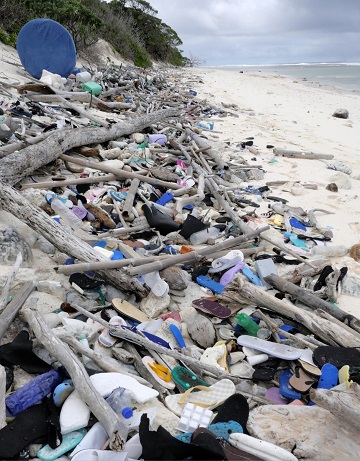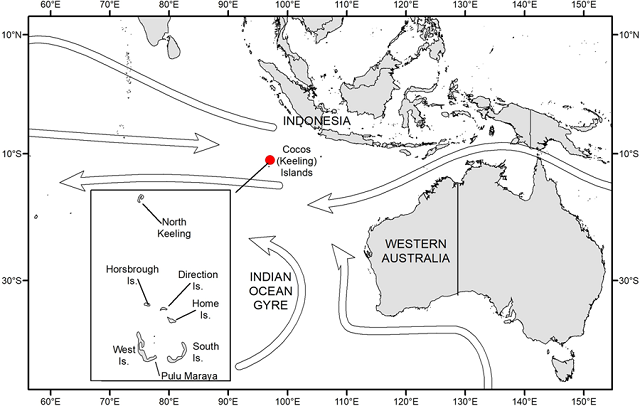One of Australia’s most remote paradise islands, and home to our best beach, has been covered with 400 million pieces of waste.
This shocking piece could be used alongside Biological, Chemical or Earth and Space Sciences for years 6, 7, 8 and 9.
Word Count / Video Length: 574 / 1:54 min

We already know we’re messing up the environment, and it’s getting worse – now some of our most remote and pristine islands are covered in plastic waste.
Over 400 million pieces of plastic have washed up on the shores of the Cocos (Keeling) Islands (CKI), which are home to Australia’s best beach.
Found 2,100km off the northwest coast of Australia, the islands have a total population of under 600 people. Essentially all of the plastic has been carried by ocean currents to the islands from elsewhere.
Jennifer Lavers from the Institue for Marine and Antarctic Studies (IMAS) says that despite the community of the CKI islands being small, the soft beaches are “inundated with plastic”.
Paradise covered in plastic
The study, which is published in Nature Research, looked at the rubbish accumulation across 25 beaches on seven of the islands. Taking samples reaching from the water’s edge to the line of vegetation and up to 10cm deep, and additional surveys inside the vegetation line, the researchers extrapolated their findings to the islands as a whole – and the numbers are staggering.
They estimate that around 414 million pieces of plastic have been washed onto the soft beaches, accounting for over 95 per cent of the rubbish discovered. According to Lavers, the plastics were largely single use products.
More than 60 percent of the rubbish was micro-debris – small pieces of larger items measuring 2-5mm across. Micro-debris poses a particular risk to fish and other marine wildlife.
Shoes and disposable items such as food packaging, drink bottles, straws and toothbrushes made up close to 25 per cent of the waste.
Plastic waste is there to stay
Terrifyingly the visible waste may just be the tip of the iceberg. The researchers estimate there may be nearly 340 million rubbish items buried 1-10 cm underground – that’s a lot more rubbish compared to the 12.8 million items visible on the surface.
This raises major questions for wildlife that uses the beaches and the surrounding environment for nesting, such as sea turtles and crustaceans.
However, the buried waste creates a further problem as it can’t be removed without creating major disturbances to the environment. This, in turn, would impact local wildlife even more.
And that could mean the buried rubbish is there to stay until it breaks down in centuries time.
Buried rubbish means there’s more than we realise

Lavers and her team point out that the situation on the CKI islands isn’t anything new.
There are significant rubbish levels documented on islands and coastal areas from one side of the globe to the other, such as the Great Pacific Garbage Patch.
However, due to the amount of rubbish buried below the surface, these global surveys are considered to be a large underestimate of the rubbish that has accumulated.
The best solution, say the researchers, is a multi-pronged approach.
They argue that a limit on both plastic production and consumption is needed. However, effective waste management would also need to be implemented in order to prevent plastic from getting into the oceans in the first place.
And just because they’re remote, it doesn’t mean we can’t help these islands.
“This is a great opportunity for us to see ourselves in the debris and figure out how we can remove at least one of these items from our day to day activities,” says Lavers.
“If it’s a plastic toothbrush you use every morning when you brush your teeth, think about switching to bamboo.”
Read the full study here.
Login or Sign up for FREE to download a copy of the full teacher resource






